Best Wardrobes in Britain: Emma Slade Edmondson

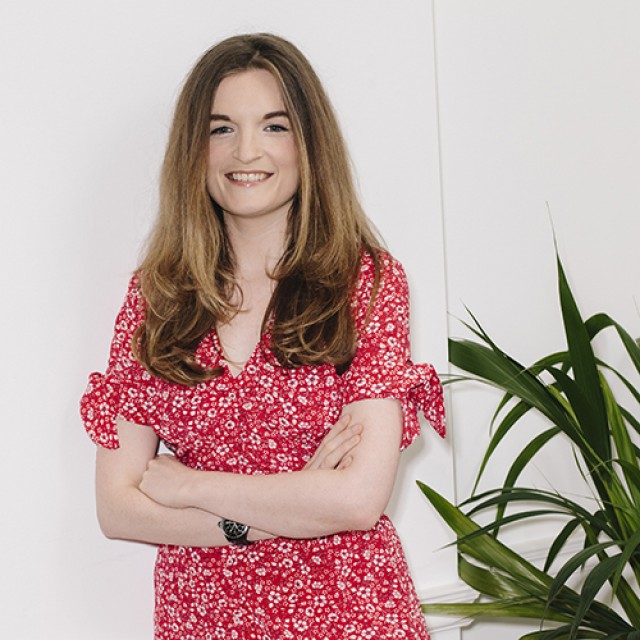
Welcome to the latest highly exciting instalment of Who What Wear UK’s Best Wardrobes in Britain. It’s where we do exactly what it says on the tin: delve into the most fantastical, awe-inspiring and downright influential wardrobes in this fair country of ours. We’re honing in on the women who cause the street style photographers to press their shutters as much as the characters you don’t yet know—the ones who fly under the radar with secretly incredible clothing collections.
At the heart of the fashion industry is a fascination with newness, and this has never been more apparent than in September. This is a message that’s targeted at those inside and outside the industry. At fashion month, buyers and editors are now thinking to 2020, as every single day during September designers present the trends they will be championing for the next year. This is also one of the biggest "drop” moments of the year, meaning we are all encouraged to invest in new trends.
This month, however, we’ve seen a shift away from a focus on newness, as sustainability has become one of the most-used words in fashion. One of the best ways to be sustainable is to move towards a more circular fashion model, buying and renting rather than always defaulting to something previously unworn. Secondhand September is an Oxfam initiative in which you pledge say no to new clothes, and more than 40,000 people have used this hashtag on Instagram.
This might feel like the first September that a secondhand message has made headlines, but creative consultant Emma Slade Edmondson was the first person to put a charity-shop angle on fashion week—she launched Charity Fashion Live, where she re-creates runway looks in a charity shop. There’s no better advert for British charity shops than Emma’s wardrobe—her rails have so much personality that they’re infectious, and they’re filled with treasures she’s hunted down from the likes of Traid or Cancer Research.
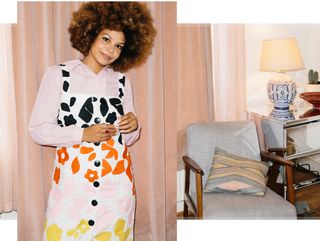
In 2017, it was estimated that there are 10,500 charity shops in the UK—to put that number into context, there are only 530 Prets and 64 Zara stores across the country. We will all walk by a charity shop every day, but how many of us actually shop there for a wedding or that big work moment? I’ve never bought any clothes (bar one Freshers fancy dress outfit) from a charity shop, but seeing the mint-green mini bag Emma found in a Barnado’s, I had to question my shopping habits. Emma has been a champion of sustainability in fashion for over a decade, so before you rush to your local Oxfam, see her incredible secondhand collection and her tips for rethinking how you shop.
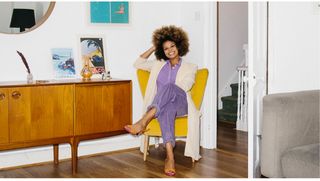
When did your love of charity shopping begin?
I’ve always been into vintage and secondhand, because my mum and my nan used to hand me down their bits and my mum was really into going into these designer fairs. She would go and pick up things by either unknown designers or people she did know, but she kept them all for me. So when I was 13 or 14, my mum gave me the things that she wore in her 20s, because I’m mixed race and my mum was really, really slight when she was younger, and I have a completely different body shape. Basically I was able to wear those things when I was 13 or 14—some of them were a bit risqué or just a bit grown-up. I just loved looking different and having things other people didn’t have. I always looked grown-up, so that’s where my love of vintage, secondhand and interesting pieces that other people wouldn’t have came from.
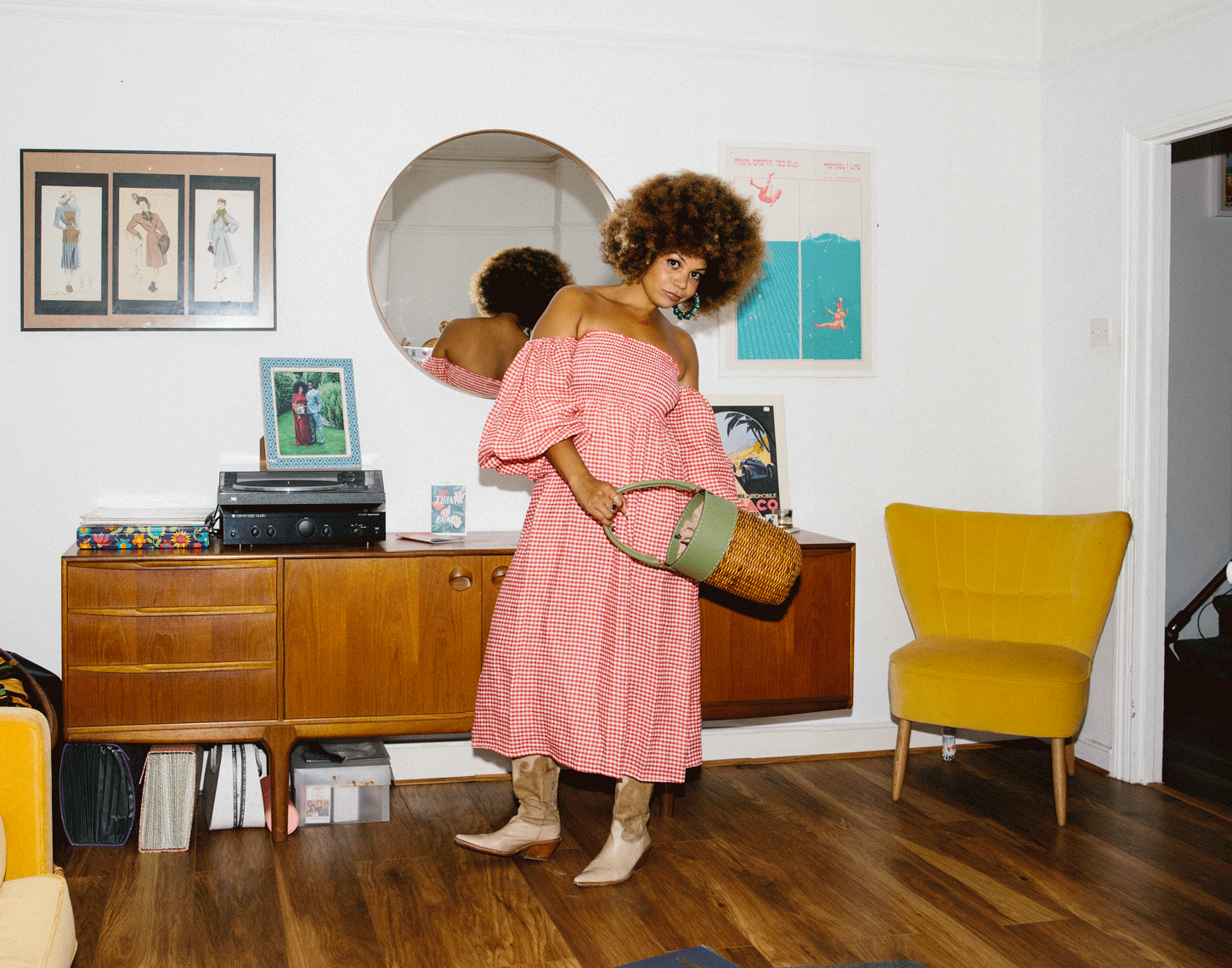
And how did you turn this love of secondhand clothing into a career?
I have been working in fashion for a long time, but in the beginning, I was really interested in how I could give a voice to an NGO or a sustainable brand during fashion week. So I came up with this crazy idea called Charity Fashion Live, which was re-creating looks in real time as they came out on the catwalk, using only what I’d find in one single charity shop.
The first year, I didn’t know if it would work—it was a pilot, and I rocked up to my local Trinity Hospice. We only did three looks, but it worked and was amazing. I suppose that’s where it became a thing and part of my career. Off the back of that, now I work with different charities creating charity retail brands. It’s like creating a brand for anything—it’s about understanding what that charity is about and what they have to offer from a retail capacity, and trying to take that and make it into a brand that people recognize.
For Love Not Landfill, my brief was to get 16- to 24-year-olds shopping in charity shops, and to create a space they would want to hang out in and collections that would speak to them. So my idea was to have influencers curate different capsules for charity shops for a pop-up. It’s about thinking about the experience, the look, of marketing experience and brand creation for charities.

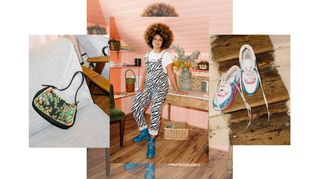
What are your tips for finding the best pieces in charity shops?
I often do take a piece with me, and nowadays, I often go in looking for something. It might not be the way to go about it if you’re a beginner, but I like to go in and think I’m going to a wedding, or I have a dinner, or whatever it is, and I’ll take something from my wardrobe and have an idea of the style of thing i’m looking for. Maybe it’s the feeling or the vibe.
You have to treat it like you would any kind of shopping, in the sense that you think about your location. If you want a designer piece for a wedding that you want to be in impeccable condition, head to Portobello rather than Dalston. It’s common sense geographically when you think about it: If I want retro, I’ll go to Dalston or to a Trade in Shepherd’s Bush. It’s getting to know the shops and visiting them often— get into the habit of popping in on the way home.
You also have to enjoy it and revel in it, unlike like fast fashion, where people aren’t enjoying their fashion experiences as much because it’s transactional. It’s about getting the feel for materials and trying things on. Make a day of it and give yourself time to relax into it. There is a different approach required, however. You’re styling on the hunt, and when you get into the knack of that, it’s really exciting, because you’re continually able to pull new and interesting looks together because that’s your way of shopping.
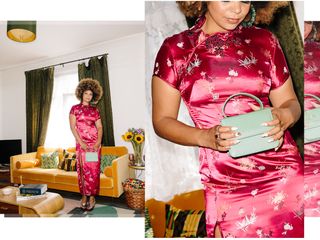
How much of your wardrobe is from charity shops?
I don’t know, percentage wise, but the way I work is I don’t buy a lot of new things. I try to buy secondhand, I do loan ,and if there are particular pieces I really want, I will save up for them. For example, the Mara Hoffman or Sleeper dresses I’m wearing today. I will still usually go for brands I consider to be conscious. But similarly, I believe you should love and look after your clothes. Even things from fast fashion brands I wore years and years ago, I still keep those and wear them. For me, it’s about getting as much wear out of things as you can.

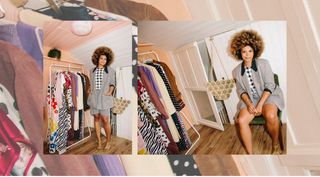
How has your style changed over the years?
It has become refined crazy. My style has always been eclectic, and I love a lot of colour, as you can see from my living room, but it has become more refined. I love Mara Hoffman because that’s exactly what it is—refined colour. There’s always something something exciting with her designs with pattern, colour or texture, but it still looks chic and refined with classic cuts.
What’s your earliest fashion memory?
My mum gave me a black boned corset dress when I was 14, and I wore it in a singing performance in school, and I remember feeling so glamorous and like a star. It was really grown-up and a proper, proper dress. Nobody else had anything like it. I was petrified of doing it, but I felt like I really fit the part.
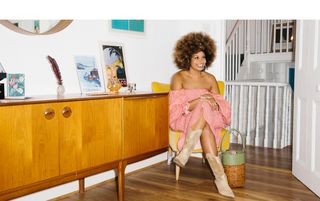
What are the pieces you are the most sentimental about?
I have a lot of my mum’s old stuff—my mum isn’t with us anymore—so those are really special to me. I also love having my nan’s stuff; she’s still with us. I have a coat she altered which she bought in the ’30s; she made it more snazzy by adding fur lapels and collars. I have so many of my mum's dresses—her whole collection. I never thought of my nan as some fashionista, but she has an eye as well. She wore the same dress to my mum and dad’s wedding as she wore to my wedding, so she has a knack for timeless pieces. She’s the holy grail of fashion sustainability.
What is the best thing you ever found in a charity shop?
I have had so many amazing finds. I once found a Saint Laurent wool cape with appliqué and a hood, which was sick but totally out of my budget, and they held it for me for a year in the back, but I never bought it. That was years ago; it’s long-gone, and I still think about it.
Thanks for having us, Emma!
-
 I'm a Fashion Editor—I Reach For These 2 Pieces When I Don't Know What to Wear
I'm a Fashion Editor—I Reach For These 2 Pieces When I Don't Know What to WearReady in 10 minutes or less.
By Jennifer Camp Forbes
-
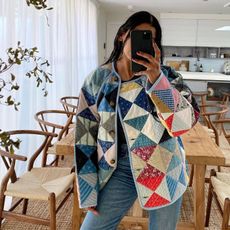 The Only 9 Jackets You Need for Spring, According to Fashion People
The Only 9 Jackets You Need for Spring, According to Fashion PeopleThere's something for everyone.
By Remy Farrell
-
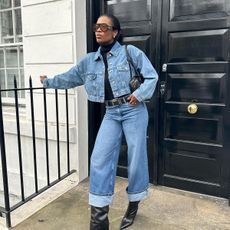 And Now, 5 Elevated Ways to Wear Your Jeans in 2024
And Now, 5 Elevated Ways to Wear Your Jeans in 2024Denim devotees, unite.
By Grace O'Connell Joshua
-
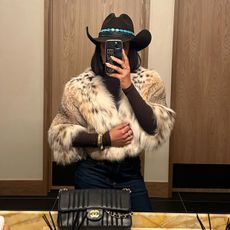 After 5 Days in Aspen, I'm Officially Hooked on Western Pieces—5 I'm Loving RN
After 5 Days in Aspen, I'm Officially Hooked on Western Pieces—5 I'm Loving RNFrom cowboy hats to fringe accents.
By Grace O'Connell Joshua
-
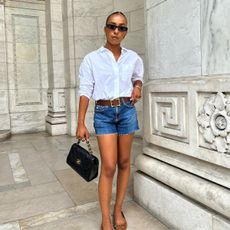 I Asked Over 2000 Women Where to Buy the Best White Shirts—They Love These 23
I Asked Over 2000 Women Where to Buy the Best White Shirts—They Love These 23Your definitive guide.
By Elinor Block
-
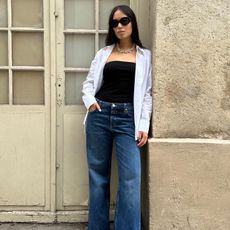 Here's How French Women Are Styling Their Jeans Right Now
Here's How French Women Are Styling Their Jeans Right NowTake note.
By Courtney Falsey
-
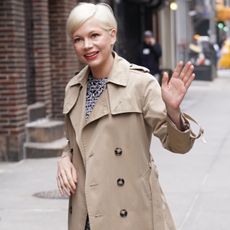 French Women Always Wear This Jeans-and-Flats Outfit Formula
French Women Always Wear This Jeans-and-Flats Outfit FormulaEasy as un, deux, trois.
By Drew Elovitz
-
 I Went to France and Saw Everyone Wearing These 5 Basics on the Streets of Paris
I Went to France and Saw Everyone Wearing These 5 Basics on the Streets of ParisEffortless and chic.
By Bobby Schuessler

